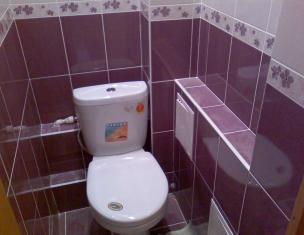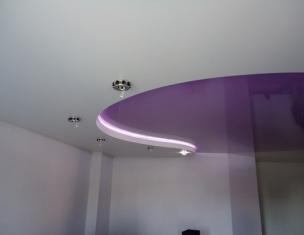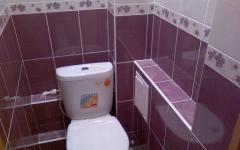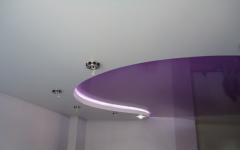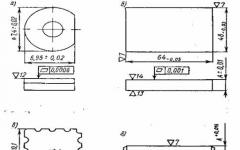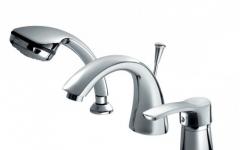Facing with ceramic tiles is an important stage in the formation of the bathroom interior. But the lined surfaces acquire a completely completed look if plastic corners for tiles in the bathroom are used to process the corners and joints of the walls.
The overall dimensions of plastic corners are convenient to use - the dimensions of the shelves are 25 × 25 or 50 × 50 mm with a length of 2.5 m, and the material - polyvinyl chloride - is practical due to its resistance to corrosion and high humidity, resistance to harmful biological factors - mold, fungi and insects. Bathroom corners are inexpensive, have enough flexibility and pliability when laying, which is necessary to smooth out small defects in cutting and laying tiles. Corners with increased flexibility are convenient to use when finishing oval and rounded bathtubs, rounded wall surfaces.
A narrow and thin corner has a purely technical purpose - with its help, the joints of the walls are aligned, while a wider plank can be used as an element of bathroom decor. Finishing corners are supplied with accessories corresponding in size (plugs, corners, adapters) - components are necessary to ensure smooth transitions at the joints and ends of the corners during installation. For more advanced models of corners with a snug fit to the lined surface of the walls, the edges are made rubberized.
plastic bath corner
Installation options
Plastic corners are installed on the internal and external joints of ceramic-lined walls in two ways, including:
- After laying ceramic tiles - the corner is placed on top, above the tile, on the outer or inner joint of the surfaces. This method allows you to use the tile corner internal and external for decorative purposes, selecting it in accordance with the color and texture of the facing material.
- Before laying the tiles, a thin corner for the bathroom under the tiles, which in this case serves to align the corners, is fixed on the walls processed for laying, after which the facing material is laid on top of it.
Installation of a corner on a tile
It is not difficult to install a plastic corner on a tile; this is done after the completion of the facing work. The main condition should be high-quality pre-treatment of the tile coating - it is cleaned of dust and dirt with rags, degreased. The requirements for cleanliness and dryness of surfaces are high - the strength of gluing the corners to the tile depends on the quality of processing and the absence of moisture at the installation site.
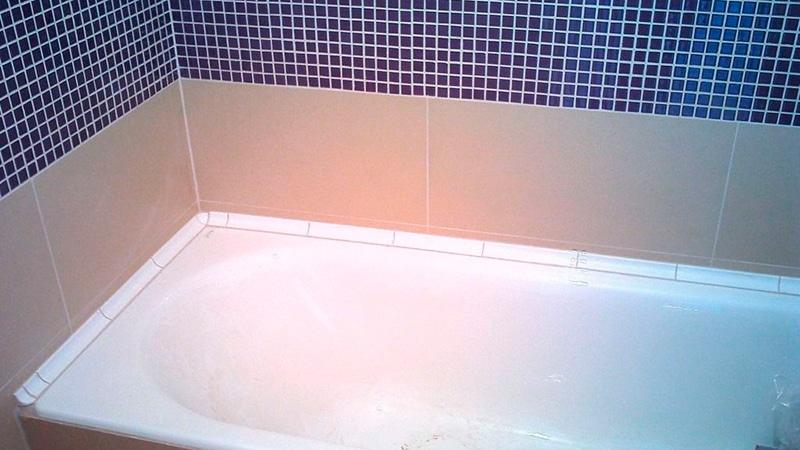
Ceramic corner for the bath
Processing joints between the bathroom and the walls
Even if the bath is installed close to the walls, gaps remain at the junctions, which must be sealed with a sealant, preferably an aquarium one, before installing the corner, and wait for it to dry completely. It is not advisable to carry out the work alone - with an assistant it is easier to ensure the necessary accuracy of laying the planks. In addition, for high-quality performance of work, simultaneous and tight pressing of the corners along the entire length is necessary for better bonding of surfaces.
In order not to spoil the enamel, masking tape can be glued to the edges of the bathtub. After that, the planks must be cut in accordance with the dimensions of the installation site, apply “liquid nails” glue to their lower part, lay the planks on the edges of the bathtub and press them as hard as possible, simultaneously to the surfaces of the bathtub and the wall. The reliability of its gluing, and, accordingly, the tightness of the joints, depends on the force with which the corner is pressed. In more detail, the procedure for conducting work can be described in the instructions for installing plastic borders on the bath, using the appropriate fittings (corners, plugs, etc.).
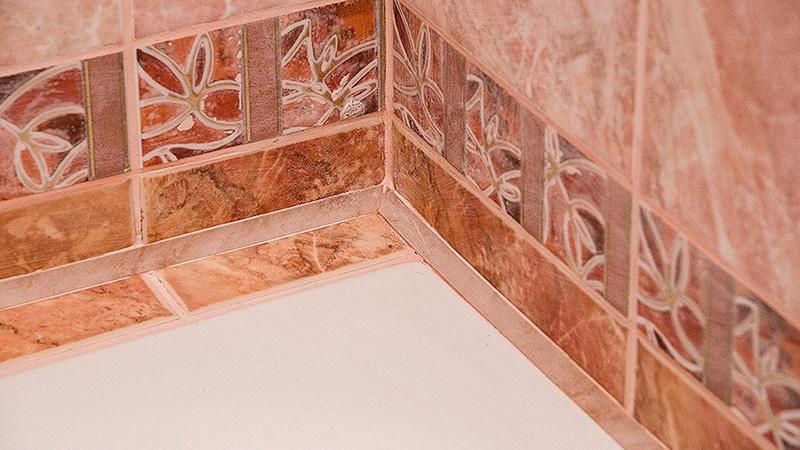
plastic corner for bathtub
Under tile installation
The plastic corner laid under the tile helps:
- create absolutely even joints, both internal and external;
- provide reliable waterproofing at the junction of wall surfaces, protecting the ceramic coating from water ingress and its gradual destruction.
It is important that the corner on the bathtub under the tiles is installed by specialists with relevant experience and special knowledge on this issue - the correct execution of the work will help to avoid the need to replace the border in the future and remove it together with the laid tiles. Only professionals have access to sufficient accuracy and quality of laying tiles on a corner.
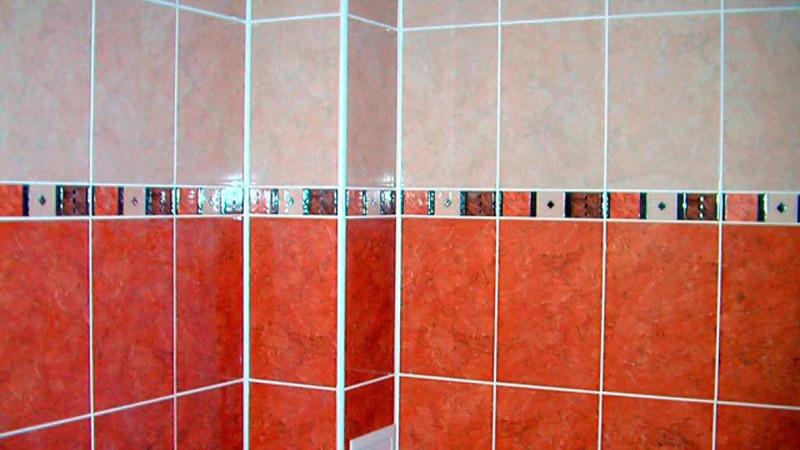
External corner made of plastic under the tile
Ceramic corners
Ceramic corners, which are used instead of conventional PVC strips, will significantly improve the quality and durability of facing works. Due to the special physical and chemical properties, ceramic borders have sufficient strength and look good on ceramic surfaces (joints). Ceramic products are able to maintain a presentable appearance for a long time, hardness, strength, moisture resistance make them especially attractive in terms of reliability in operation. Ceramic borders are also color stable, especially when compared to PVC products, which can become cloudy or yellow after a few years of installation.
The disadvantage of ceramic borders can be considered their inability to withstand shock loads, which are not uncommon during operation. The result of impact or falling heavy objects are cracks, chips or even destruction of the surface. Conclusion: when using ceramic borders in facing, it is necessary to exercise maximum accuracy.
The most common ways to install ceramic skirting boards are:
- Laying the plinth under the tiles;
- Tile laying.
Installation of ceramic plinth under the tile
After installing the bath close to the wall, checking the horizontal level, a ceramic border is laid on its edges. A row of tiles is laid on the vertical shelf of the curb, continuing the laying up to the ceiling. There is no doubt about the reliability of the ceramic border - its long service life has been proven by experience.
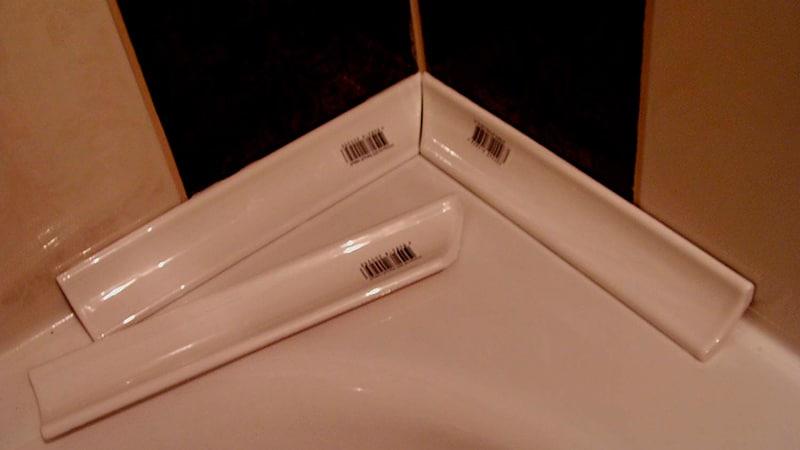
Corner for tiles in the bathroom for a ceramic bath
Before starting work, you need to calculate the amount of materials. You will need a silicone sealant, which must contain antifungal agents, as well as mold protection (1 tube), up to 2 kg, for tiles. The number of borders should be equal to the number of tiles, matching them in length. In addition, several curbs should be provided in stock in case of marriage or battle.
The places of installation and gluing of the ceramic border must be wiped from dust and degreased. The joints between the bathroom and the walls are evenly poured with sealant - this is necessary so that water does not seep through the gaps formed. After the sealant has hardened, tile adhesive is applied to each tile corner on the back side with a spatula, then they are tightly pressed simultaneously to the edge of the bath and to the adjacent wall. The width of the seams between the corners must correspond to the tile seams; for this, special crosses are used for laying. This is necessary to maintain the verticality of the lines on the side walls. Align the position of the curbs by tapping with a mallet.
Next, proceed to laying the tiles in a vertical direction. The inner corner on both sides of the bath is also laid out using a ceramic corner. If this is not available, a bathtub corner can be made by cutting a ceramic bathtub skirting board at a 45° angle using a tile cutter. Then the cut is polished on an emery wheel. The length of the borders obtained in this way must be adjusted according to the length of the finishing material used to finish the walls. Tile adhesive will bond better if water is poured over the curbs after the adhesive has fully cured. The gaps are treated with a grout to match the color of the cladding and borders.
Installation of ceramic plinth on tiles
This method of installation is simpler and more aesthetic at the same time, allowing you to use the ceramic bathroom corner on the tiles not only to level the corners, but also to finish the tiled surfaces in accordance with the overall color scheme of the bathroom interior. A waterproof adhesive (“liquid nails”) is applied to the corner formed by the lined walls and to the vertical surface of the curb, after which the curb is pressed against the tile with force and fixed in place.
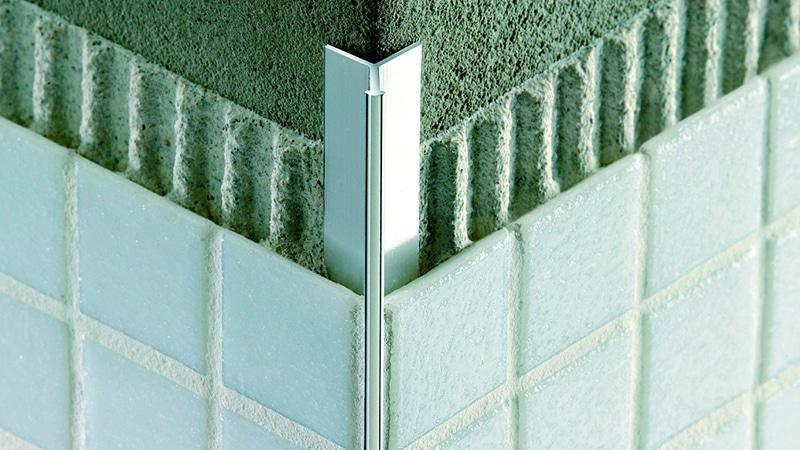
Corner for tiles in the bathroom external



